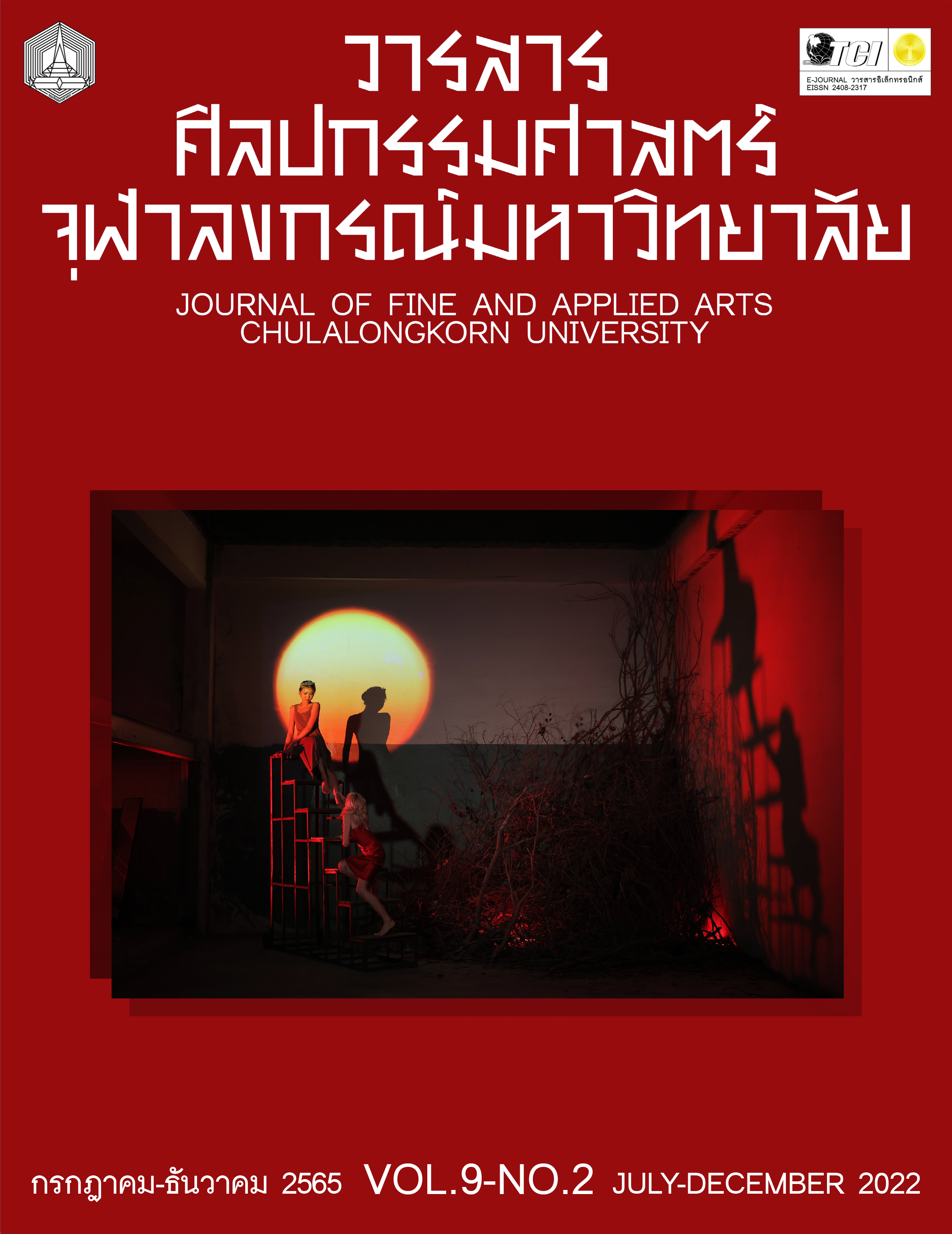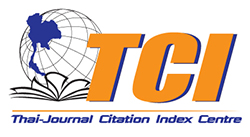THE TRANSMISSION OF LUK KRUNG SINGING BY CHOMCHAY ARUNCHAN
Keywords:
CHOMCHAY ARUNCHAN, TRANSMISSION, LUK KRUNG SONGSAbstract
This article is part of the thesis titled “The Transmission of Luk Krung Singing by Chomchay Arunchan” The objective was to identify and study the technique, methodology, and means to pass on Luk Krung singing by Kru Chomchay Arunchan. The researchers selected a qualitative approach as the research method for this study, and specified two groups of informants: 1) key informant, that is, Kru Chomchay Arunchan; and 2) six informants who acquired the singing technique from Kru Chomchay Arunchan through the music band of the Public Relations Department for a period of at least five years. The findings indicated that, for the technique of singing Luk Krung songs, Kru Chomchay emphasized singing with rhythmic accuracy, singing will a full voice, placing accent on certain notes, sustaining or holding notes like in Thai traditional music to create a unique character, as well as interpreting the lyrics to relay the deepest and the most profound message of the song. As for the knowledge transfer, Kru Chomchay guided on the singing voice, advising on the fundamentals of singing by selecting songs suitable for each learner’s voice, and placing importance on the singing skills such as accuracy in the lyrics, the tone, and the rhythm. Moreover, Kru Chomchay’s teaching techniques incorporated learning activities that centered around learners, which is in accordance with the CIPPA Model Theory. This ensured that each learner would develop and progress based on their nature, that they were encouraged to seek and link new knowledge to be able to adapt it and share it with peers, and that they gained expertise through first-hand experience and could apply it to both individual and group performances. These teaching techniques helped learners to improve based on their individual capacity and knowledge. The experience they received also built on the existing knowledge and added on to the new knowledge, allowing learners to improve their voice quality to create a unique identity.
References
คีตา พญาไท. ตำนานครูเพลง เพลงไทยสากลลูกกรุง. กรุงเทพฯ : แสงดาว, 2555.
โฉมฉาย อรุณฉาน. “การถ่ายทอดการขับร้องเพลงลูกกรุงของครูโฉมฉาย อรุณฉาน.” สัมภาษณ์โดย ภาวรินทร์ พันธ์คำ. 19 ตุลาคม 2563.
โฉมฉาย อรุณฉาน. “การถ่ายทอดการขับร้องเพลงลูกกรุงของครูโฉมฉาย อรุณฉาน.” สัมภาษณ์โดย ภาวรินทร์ พันธ์คำ. 29 เมษายน 2564.
ณัฐดนัย วงศ์วรสันต์. “การถ่ายทอดการขับร้องเพลงลูกกรุงของครูโฉมฉาย อรุณฉาน.” สัมภาษณ์โดย ภาวรินทร์ พันธ์คำ. 27 พฤศจิกายน 2563.
ณัฐธัญ อินทร์คง, “พัฒนาการ ลักษณะเฉพาะ และองค์ความรู้ของการขับร้องเพลงไทยสากล” วิทยานิพนธ์ระดับปริญญาปรัชญาดุษฎีบัณฑิต, มหาวิทยาลัยมหิดล, 2559.
ดวงใจ ทิวทอง. อรรถบทการขับร้อง กระบวนแบบและนวัตกรรมการขับร้อง. กรุงเทพฯ : วิสคอมเซ็นเตอร์, 2560.
ทิศนา แขมมณี. ศาสตร์การสอน องค์ความรู้เพื่อการจัดกระบวนการเรียนรู้ที่มีประสิทธิภาพ. กรุงเทพฯ : สำนักพิมพ์แห่งจุฬาลงกรณ์มหาวิทยาลัย, 2560.
ปุณยวัฑน์ ไวยสาวงศ์. “การถ่ายทอดการขับร้องเพลงลูกกรุงของครูโฉมฉาย อรุณฉาน.” สัมภาษณ์โดย ภาวรินทร์ พันธ์คำ. 21 ธันวาคม 2564.
สมบัติ กิ่งกาญจนวงศ์. “การวิเคราะห์เพลงลูกกรุง.” วิทยานิพนธ์ระดับปริญญาการศึกษามหาบัณฑิต, มหาวิทยาลัยศรีนครินทรวิโรฒ, 2534.
Downloads
Published
Issue
Section
License
Copyright (c) 2022 PAWARIN PHANKUM, NACHAYA NACHANAWAKUL, PREEYANUN PROMSUKKUL

This work is licensed under a Creative Commons Attribution-NonCommercial-NoDerivatives 4.0 International License.
ลิขสิทธิ์ของบทความเป็นของเจ้าของบทความ บทความที่ได้รับการตีพิมพ์ถือเป็นทัศนะของผู้เขียน
กองบรรณาธิการไม่จำเป็นต้องเห็นด้วยและไม่รับผิดชอบต่อบทความนั้น






